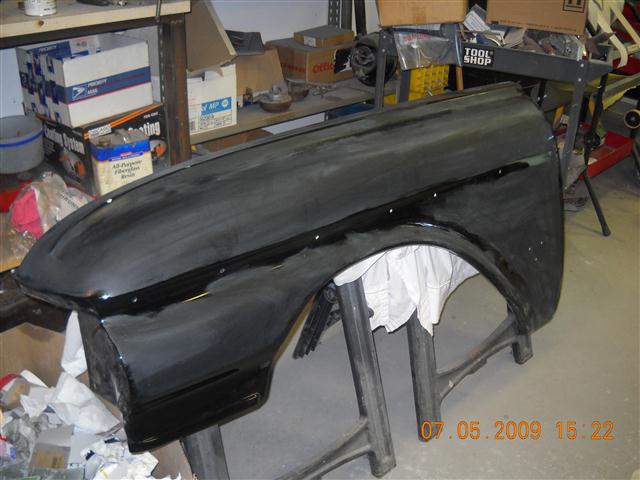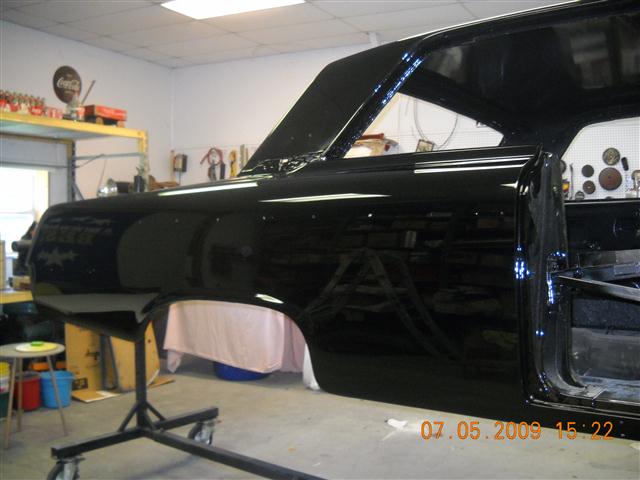July 3, 2010
There really isn't much to show in pictures in the past month. On camera, the car looks the same as it did since about 50 hours of work has been done in the last month, but actually there is a big difference. If you look real closely on a new car paint job, you can see tiny dimples all over the car. To get the paint to look perfect we sanded these dimples down. To give you an idea of the time involved to do this, the picture shows the fender after it has been sanded with 1500 grit sandpaper. It took at least two hours to sand the fender. The next step is to polish the fender using four different grades of rubbing and polishing compound. Once the car is assembled, a fifth grade, called a glaze, will be used. The polishing of the fender will take at least two hours also.
Basically the car is painted nice and shiny, sanded dull, then polished to a shine that is better than the original paint.
The next picture is of the quarter panel after several hours of sanding and polishing after painting.

